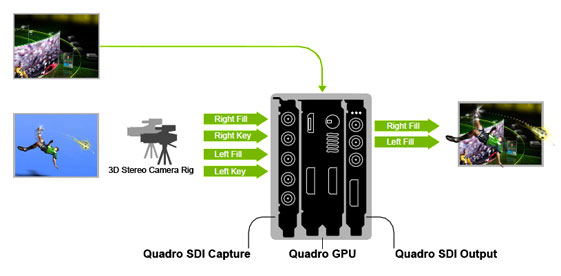
Peredelka Geforce V Quadro Fx
I'm not a 3D or HPC guy, but I've been tasked with doing some research into those fields for a possible HPC application. Reading benchmarks, comparisons and specs between nVidia Quadro and Geforce cards, it seems that for similar generation cards: • Quadro is 2x-3x the price of Geforce • hardware wise, the differences are not that great • in benchmarks (3ds Max, Maya and some others) Quadro cards are much better performing than Geforce ones Does anyone know what are the exact and precise technical differences that can cause such better performance?
Find the compute capability of the latest CUDA Capable NVIDIA GPUs.
My speculation (and what can be generally read on the net), since the hardware is of similar specs, is that it's all in the drivers. If that's the case, what kind of functionality do the Quadro drivers offer that programmers of 3ds Max and other have taken advantage of?
Of course, I'm not interested in marketing speak: higher business value, professional oriented, better support, better QA, etc. The difference is in view-port wire-frame rendering and double-sided polygon rendering, which is very common in professional CAD/3D software but not in games. The difference is almost 10x-13x faster in single-fixed rendering pipeline (now very obsolete but some CAD software using it) rendering double sided polygons and wireframes: Thats how entry level Quadro beats high-end GeForce.
At least in the single-fixed pipeline using legacy calls like glLightModel(GL_LIGHT_MODEL_TWO_SIDE, GL_TRUE). The trick is done with driver optimization (does not matter if its single-fixed pipeline Direct3D or OpenGL). And its true that on some GeForce cards some firmware/hardware hacking can unlock the features. If double sided is implemented using shader code, the GeForce has to render the polygon twice giving the Quadro only 2x the speed difference (it's less in real-world). The wireframe rendering remains much much slower on GeForce even if implemented in a modern way. Todays GeForce cards can render millions of polygons per second, can result in 100x speed difference eliminating the Quadro benefit. Quadro equivalent GTX cards have usually better clock speeds giving 2%-10% better performance in games.
So to sum up: The Quadro rules the single-fixed legacy now obsolete rendering pipeline (which CAD uses), but by implementing modern rendering methods this can be significantly reduced (virtually no speed gain in Maya's Viewport 2.0, it uses GLSL effects - very similar to game engine). Other reasons to get Quadro are double precision float computations for science, better warranty and display's support for professionals. That's about it, price-vise the Quadros or FirePros are artificially overpriced. It's called market segmentation or something like that.
NVidia produces one very configurable chip and then sells it in different configurations that essentially have the same elements and hence the same bill of materials to different market segments, although one would usually expect to find elements of higher quality on the more expensive Quadro boards. What differentiates Quadro from GeForce is that GeForce usually has its dual precision floating point performance severely limited, e.g. To 1/4 or 1/8 of that of the Quadro/Tesla GPUs. This limitation is purely artificial and imposed on solely to differentiate the gamer/enthusiast segment from the professional segment. Lower DP performance makes GeForce boards bad candidates for stuff like scientific or engineering computing and those are markets where money streams from. Also Quadros (arguably) have more display channels and faster RAMDACs which allows them to drive more and higher resolution screens, a sort of setup perceived as professional for CAD/CAM work.
As Jason Morgan has pointed out, there are tricks that can unlock some of the disabled features in GeForce to bring them in par with Quadro. Those usually involves soldering and voids the warranty on the card. Since HPC puts lots of stress on the hardware and malfunctions occur more frequently that one would like them to, I would advise against using cheap tricks.
While you're certainly right that market segmentation is a part of it, there are actually technical reasons for binning silicon parts. Chip production is far from perfect, and most parts coming off the line have some number of defects. The chips being highly configurable means that you can disable the faulty parts of the chip and sell it at a lower cost. The same thing is done with CPUs. That's actually a good chunk of why tri-core CPUs exist. We simply aren't good enough at consistently making four good cores:) – Jul 10 '13 at 18:12.
Hardware wise the Quadro and GeForce cards are often idential. Indeed it is sometimes possible to convert some models from GeForce into Quadro by simply uploading new firmware and changing a couple resistor jumpers. The difference is in the intended market and hence cost. Quadro cards are intended for CAD. High end CAD software still uses OpenGL, whereas games and lower end CAD software use Direct3D (aka DirectX).
On our site you can find all Autodesk software, Bentley, MSC, Delcam, SRAC, SolidWorks, Dassault. Software, Full software-list you can see on our site: 1. Cadkey 19 download.